Chevrolet Camaro (1993-2023) firing order — diagram & guide
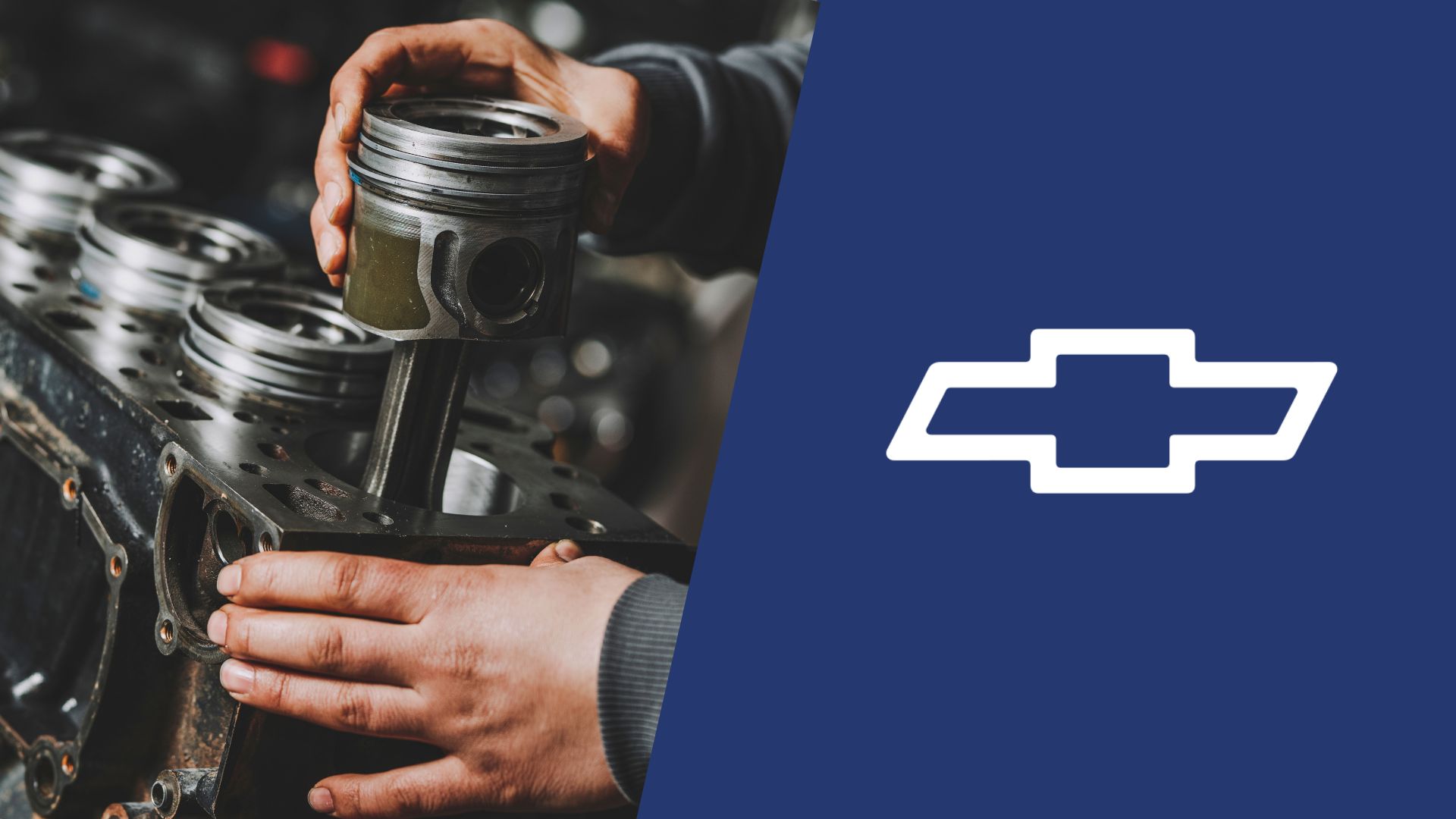
The US car market has always been unique for lovers of the pony car category, but the models that could compete with the Chevy Camaro are rare. It’s one of Chevy’s longest-running models that started in the 1960s and the sad news is that it may be entering its final production phase.
That’s why our team of experts decided to do a full brief on the past few generations of Camaro engines and their firing sequences for easier maintenance. This guide will serve you well for the Chevy Camaro (1993-2023) firing order regardless of whether you own an RS or SS version of any generation.
| CAMARO YEARS | ENGINE | FIRING ORDER |
|---|---|---|
| 4th Gen (1993-2002) | 3.4L V6 | 1-2-3-4-5-6 |
| 3.8L V6 | 1-6-5-4-3-2 | |
| 5.7L LT1 V8 | 1-8-4-3-6-5-7-2 | |
| 5th Gen (1993-2002) | 3.6L V6 | 1-2-3-4-5-6 |
| 6.2L V8 | 1-8-7-2-6-5-4-3 | |
| 6th Gen (1993-2002) | 2.0L Turbo I4 | 1-3-4-2 |
| 3.6L V6 | 1-2-3-4-5-6 | |
| 6.2L V8 | 1-8-7-2-6-5-4-3 |
Fourth-generation Chevy Camaro (1993-2002) firing order
The fourth generation of the Camaro featured two base V6 engines and the famous LT1 V8 for the SS trim. However, it’s important to note the difference in layout and firing order of the two V6 options, so we’ll tell you what you need to know about those in a bit.
Chevy Camaro 3.4L firing order

Back in the early days of this model, Camaro always had a six-cylinder option and after a straight-six engine in the previous gen, the fourth-gen model got a 3.4-liter V6. The Chevy Camaro 3.4L firing order is 1-2-3-4-5-6 and this is a pretty simple firing pattern.
All you have to do is check the cylinders in order from 1 to 6. and for that, you also need to know the cylinder arrangement. So, this engine has two cylinder banks in a transverse placement, with cylinders 1, 3, and 5 spreading in the upper one from left to right.
The bottom bank includes cylinders 2, 4, and 6 positioned the same way, which makes this engine easier to maintain.
Chevy Camaro 3.8L firing order
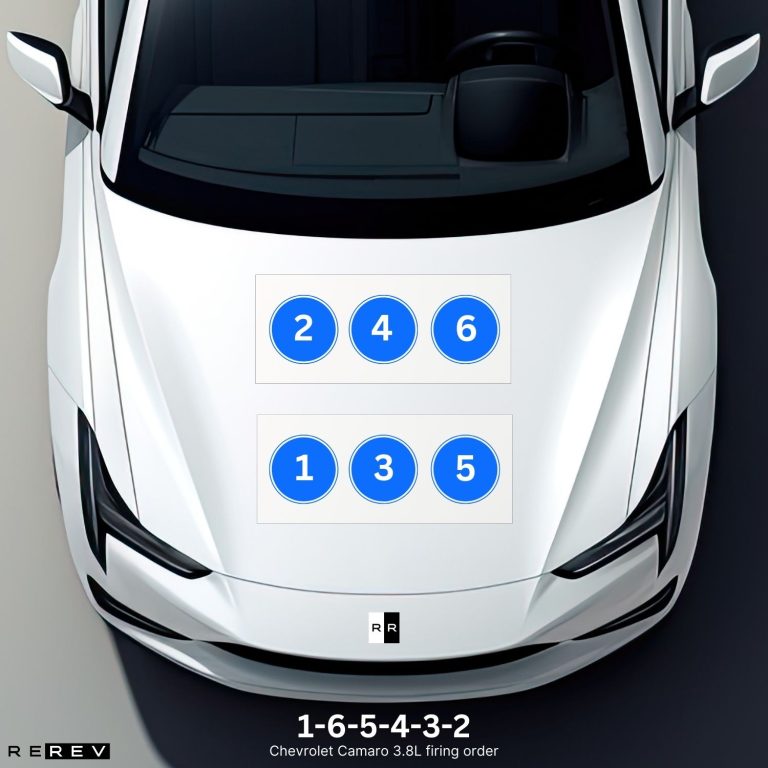
There’s another V6 engine option used in the fourth-gen Camaro and this time it’s the 3.8-liter V6. Once again, the engine is transversely placed in the engine bay but there’s a major difference between this one and the 3.4L engine.
To put it simply, the cylinder arrangement doesn’t match since this time the upper bank houses cylinders 2, 4, and 6 with the lower one including cylinders 1, 3, and 5 left to right. The Chevy Camaro 3.8L firing order is 1-6-5-4-3-2 and that’s another major difference between this one and the 3.4L model.
Chevy Camaro 5.7L firing order
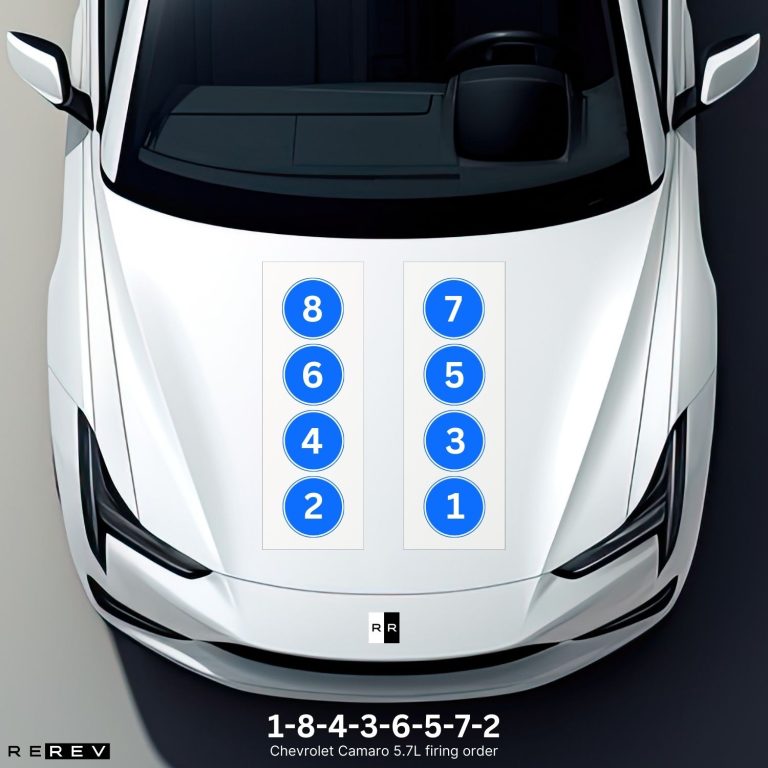
For lovers of muscle cars like the Camaro, the 5.7L-powered SuperSport model featuring the mighty LT1 engine was an obvious option. The Chevy Camaro 5.7L firing order is 1-8-4-3-6-5-7-2 so you can see the clear difference between this one and the V6 spec models.
Of course, the V8 has two cylinders more and that also results in a different cylinder placement. There are two cylinder banks in this longitudinal V8 and the passenger’s side cylinders are 2, 4, 6, and 8 front to rear. That means that the first cylinder is located within the driver’s side bank along with cylinder numbers 3, 5, and 7 front to rear.
Fifth-generation Chevy Camaro (2010-2015) firing order
The fifth-gen Camaro is arguably the most iconic one among the newer renderings of this legendary pony car. It was featured in some blockbuster movies and it’s no wonder it has such appreciated status due to all the design improvements that it had along with more capable engines.
That’s why we have two entirely new engine options and we’ll discuss both the RS and the SS trims of the fifth-gen Camaro.
Chevy Camaro 3.6L firing order
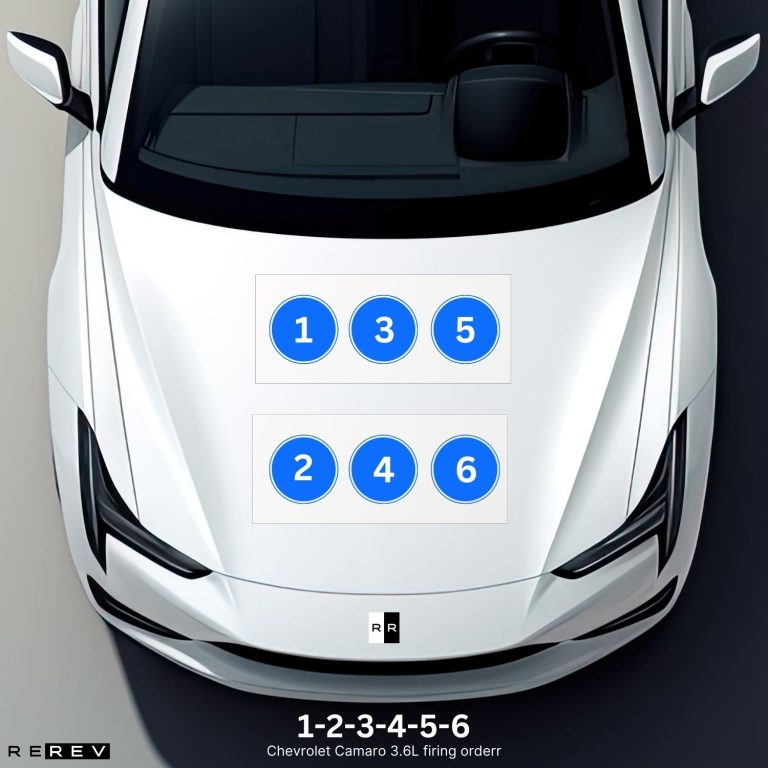
For the start, we have the Chevy Camaro 3.6L firing order 1-2-3-4-5-6 so the base V6 engine option resembles the old one from the previous gen quite a bit. The power output was increased to above 305 horsepower this time around and the cylinder layout was once again similar to the 3.4L Camaro.
The cylinder number one was in the upper cylinder bank with cylinders 3 and 5, so the 2, 4, and 6 cylinders were right below them looking from left to right.
Chevy Camaro 6.2L firing order
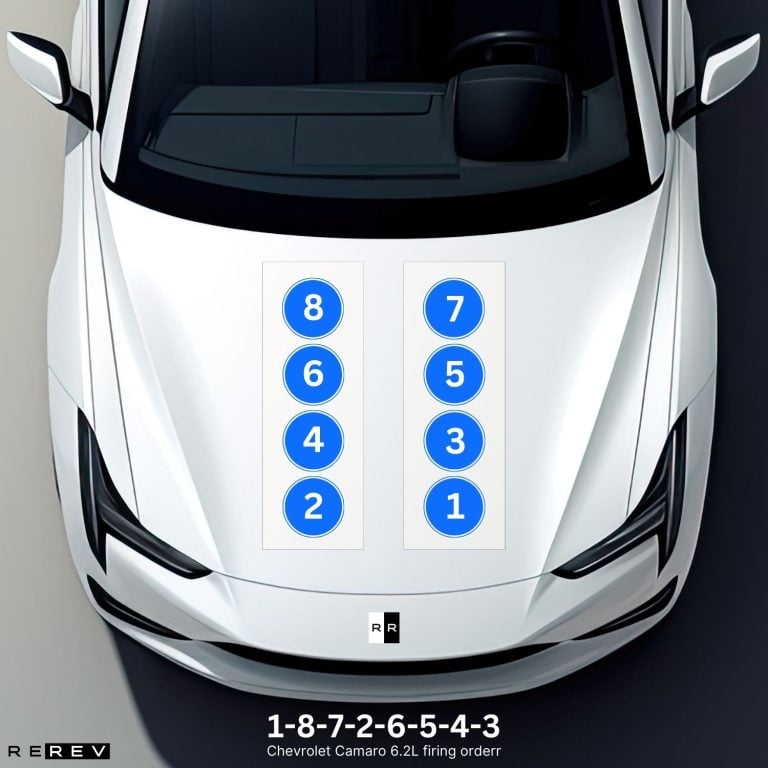
The fifth-gen Camaro is also iconic for the introduction of a staple 6.2-liter LS V8 engine used in the sixth-gen SS model as well. It became a signature V8 for newer Camaro models and the Chevy Camaro 6.2L firing order is 1-8-7-2-6-5-4-3.
When compared to the previous generation of the SS model with the 5.7-liter V8, the cylinder arrangement has remained the same. So, the driver’s side cylinder bank included cylinders 1, 3, 5, and 7, while the passenger’s side cylinder bank housed cylinders 2, 4, 6, and 8.
Sixth-generation Chevy Camaro (2016-2023) firing order
Finally, we reach the current Chevy Camaro generation which is the sixth-gen Camaro. The engine options for this one didn’t change much since the LS V8 and the 3.6-liter RS engine were still offered, although with slightly higher power outputs.
Even so, these were essentially the same 3.6L and 6.2L engines with the same configuration and firing orders, so we’ll focus on the newly added four-cylinder.
Chevy Camaro 2.0L firing order
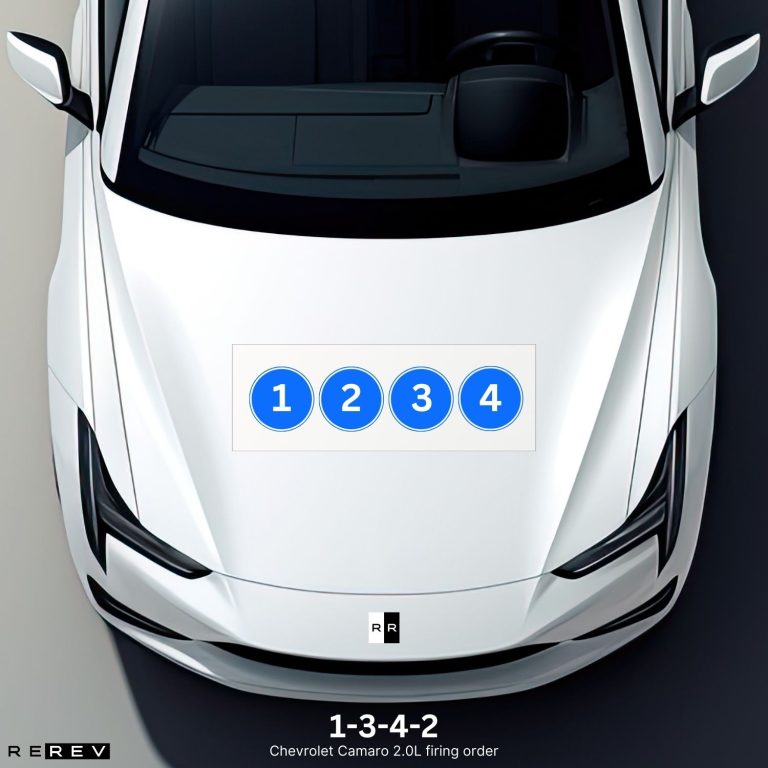
As a regular four-cylinder turbo engine for the lower Camaro trims, the 2.0-liter engine had a firing order of 1-3-4-2. It’s pretty common for four-cylinder turbocharged engines and the cylinders go from number 1 on the left to number 4 on the right in a straight order.
Our take
As a team of experienced automotive experts, we salute you regardless of the version of the Camaro you own. We can’t pick our favorite one among such great options, but surely RS and SS trims stand out with amazing engine selections.
Well, now you’ll be able to make your engine run at least a few miles longer with the help of our guide, so make sure to follow the firing orders accordingly.